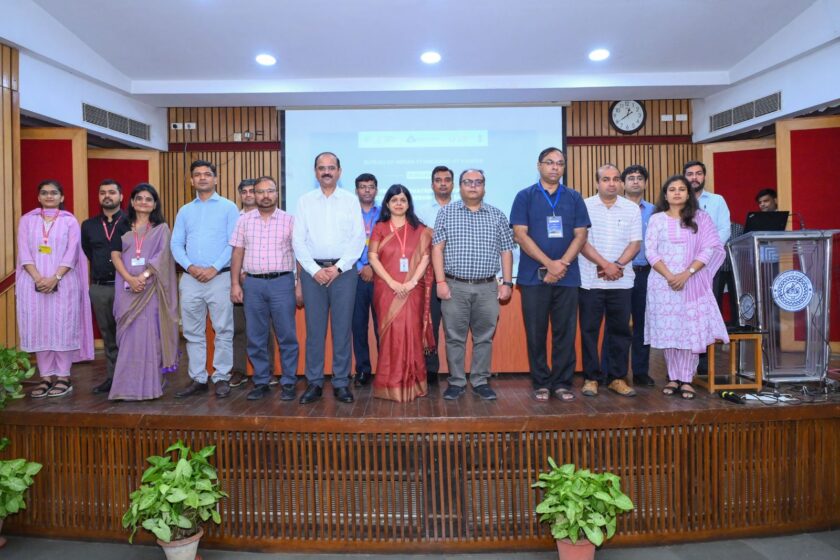By: Manoj Singh, Retd IAS, Former ACS, Government of Uttar Pradesh
Lucknow: The story of intelligence is as old as life itself, tracing its origins through billions of years and countless transformations. From instinct-driven bacteria to the collective intelligence of modern humans, intelligence evolved gradually, shaped by environmental pressures, survival challenges, and social complexities. By examining its progression through geological ages, we can understand how intelligence became the cornerstone of life’s adaptability and success.
The Foundation: Precambrian Era (4.6 Billion–541 Million Years Ago)
The Precambrian Era laid the groundwork for all life, with single-celled organisms like bacteria and archaea emerging as the planet’s first inhabitants. While intelligence, as we understand it today, did not exist, these organisms demonstrated basic survival mechanisms, such as chemotaxis—moving toward nutrients or away from toxins.
This early “instinctive intelligence” was akin to a simple, pre-programmed robot following basic rules. Cyanobacteria, for instance, played a key role in releasing oxygen into the atmosphere, setting the stage for more complex life to come.
With time, organisms developed nervous systems capable of reflexive learning. Early vertebrates like fish could process sensory information to hunt prey and evade predators. This era also saw amphibians and reptiles evolving with better sensory systems, allowing them to adapt to diverse habitats.
For example, creatures like Tiktaalik, a transitional species between fish and amphibians, displayed basic sensory awareness—crucial for survival on land and water. Intelligence at this stage was reactive, comparable to a thermostat that adjusts itself based on the environment, without true understanding.
The Mesozoic Era (252–66 Million Years Ago): Associative Learning and Problem-Solving
Known as the “Age of Reptiles,” the Mesozoic Era witnessed the dominance of dinosaurs and the rise of the first mammals and birds. Here, intelligence took a significant leap with the emergence of associative learning—the ability to link actions with outcomes.
Dinosaurs displayed a range of behaviors, from group hunting to nesting, indicating early social structures. Birds like Archaeopteryx likely developed basic problem-solving skills, such as locating hidden food. Early mammals also began showing signs of innovation, such as burrowing and nocturnal adaptations to escape predation.
This stage of intelligence is comparable to learning cause-and-effect relationships, much like Pavlov’s famous dogs salivating at the sound of a bell.
The Cenozoic Era (66 Million Years Ago – Present): The Age of Mammals and Beyond
The Cenozoic Era ushered in a golden age for intelligence, with mammals and primates taking center stage. Over time, the brain-to-body ratio of these species increased, leading to significant cognitive advancements.

Paleogene Period (66–23 Million Years Ago): Social Intelligence
Early primates, like lemurs and monkeys, began forming social groups, leading to the evolution of social intelligence. Cooperative behaviors such as grooming, group hunting, and warning calls became essential for survival.
Neogene Period (23–2.6 Million Years Ago): Tool Use and Problem Solving
The emergence of advanced primates and early hominins, like Australopithecus, marked a turning point. These species used rudimentary tools, such as stones for cutting meat. This era reflected problem-solving intelligence, akin to a carpenter using a toolbox to address different challenges.
Quaternary Period (2.6 Million Years Ago – Present): Abstract Thinking and Collective Intelligence
The Quaternary Period saw the rise of modern humans (Homo sapiens), whose intelligence evolved to include abstract thinking and metacognition (thinking about thinking). Humans developed language, art, and culture, allowing them to share knowledge and plan for the future.
From the cave paintings of Lascaux to the internet-driven collective intelligence of today, humans have pushed the boundaries of cognition. We now pool knowledge across billions of minds, solving complex problems and shaping the future of our planet.
Key Drivers of Intelligence Evolution
The evolution of intelligence was driven by environmental challenges that demanded adaptability, social complexity requiring cooperation and empathy, tool use and innovation from stone tools to modern technology, and the development of language and culture which accelerated knowledge sharing.
From the single-celled ancestors of the Precambrian to the sophisticated problem-solvers of the modern age, the evolution of intelligence reflects nature’s constant push toward adaptation and innovation. Each geological era introduced new challenges—fluctuating climates, shifting habitats, and complex social demands—that spurred the development of ever-more refined cognitive abilities.
In this grand timeline, intelligence emerges not as a fixed trait, but as a dynamic, ever-evolving force that enables life to survive, thrive, and shape the world around it. As we continue to explore the past, we deepen our understanding of both our own capacities and the remarkable diversity of minds that have flourished on this planet.





